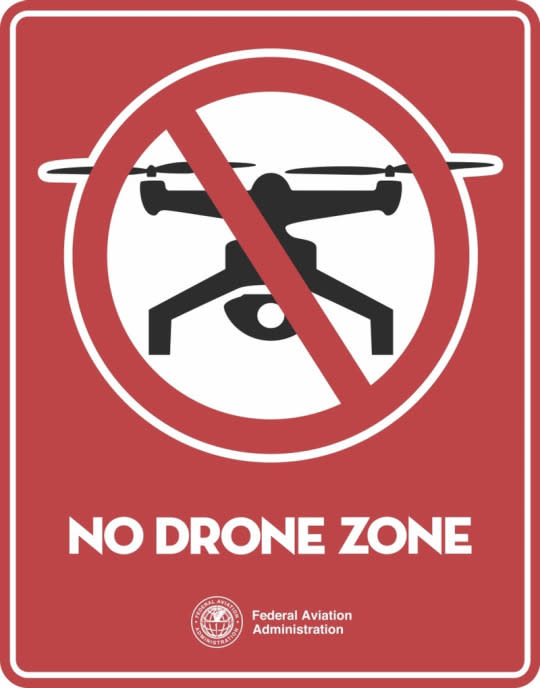Feds to Washington, D.C., Drone Enthusiasts: You’re Grounded

We told you back in December that the Federal Aviation Administration established a new rule for owners of unmanned aircraft systems (UAS) — more commonly known as drones — requiring them to register their aircraft with the government.
Less noticed — in most parts of the country, anyway — was another new FAA rule declaring Washington, D.C., a “no drone zone.” Specifically, UAS devices are now prohibited from flying within a 30-mile radius of Ronald Reagan Washington National Airport.
This new special flight rules area (SFRA) isn’t exactly new; rather, it resulted from a new interpretation of existing rules that now apply to anything that flies — including drones and model aircraft. “Unmanned aircraft, including model aircraft, are ‘aircraft’ and are subject to FAA rules,” an FAA spokesperson told Yahoo Tech in an email. “No aircraft is allowed to fly inside the SFRA unless it complies with the published airspace security requirements.”
Among those requirements: An aircraft must be in touch with air traffic control by two-way radio and must have a transponder that can broadcast a unique code. Few drones can comply.
The requirement for a transponder is the real deal killer here. Transponders designed for small airplanes are readily available and aren’t overly expensive, either. But they generally weigh more than a pound, which makes them heavier than most drones. They also require an independent source of electricity, which most drones lack.
The upshot is that no one can legally fly a drone (or model aircraft) in the Washington, D.C., area.
Model airplanes have more clout
What’s worse for drone owners is that while the FAA is working with some model airplane clubs to allow flights around their existing flying grounds, there is currently no such effort underway to help drone operators.
According to Christopher Vo, president of the DC Area Drone User Group, the organization has had trouble scheduling drone events since the latest FAA ruling. He said the administration monitors the group’s website, and whenever the hobbyists try to plan an event that’s within the SFRA, they get an email from the FAA. “They’re telling us we need to abide by the rules,” Vo said.
Vo said his organization is frustrated by the new FAA interpretation. “We’re trying to be an educational organization. We’re trying to teach people,” he said. Vo noted that as far as he can tell, there is no specific law that actually limits what drones can do in the SFRA. He also pointed out that, while the FAA action is technically just an advisory, it still carries the force of law.
Fortunately, there are some alternatives. One is to move drone-flying events outside of the SFRA, which is what Vo’s group is currently doing. The other is to move events indoors; Vo’s group is doing that too. Most hobbyist drones are fairly small and battery powered, so an indoor structure — such as a field house or other arena — can provide plenty of space. However, such facilities frequently charge users rent — which isn’t usually the case with outdoor events.
Preferential treatment
There’s also a plan in the works by the FAA to allow model aircraft clubs that have been flying in the D.C. area for decades to go back to using their traditional flying grounds within the SFRA. While the FAA considers model aircraft and drones to be the same thing, model aircraft users have had organizations in place for a long time and, as a result, have some clout with the agency.
“The FAA justifies its most recent action by stating that model aircraft are by definition aircraft and therefore subject to existing FAA rules,” said Rich Hanson, director of government and regulatory affairs for the Academy of Model Aeronautics (AMA). “That assertion is currently the subject of pending litigation, and Congress has made clear that the FAA should have a hands-off approach to model aircraft. The FAA Modernization and Reform Act of 2012 clearly prohibits the FAA from promulgating rules for model aircraft that are operating within the safety guidelines of a community-based organization such as AMA.”
Congress is even getting in on the act, beginning with hearings on UAS devices (both drones and model aircraft — bet you didn’t know there are both a Congressional drone caucus and a Senate drone caucus.) But for now, drone users in our nation’s capital are grounded.
